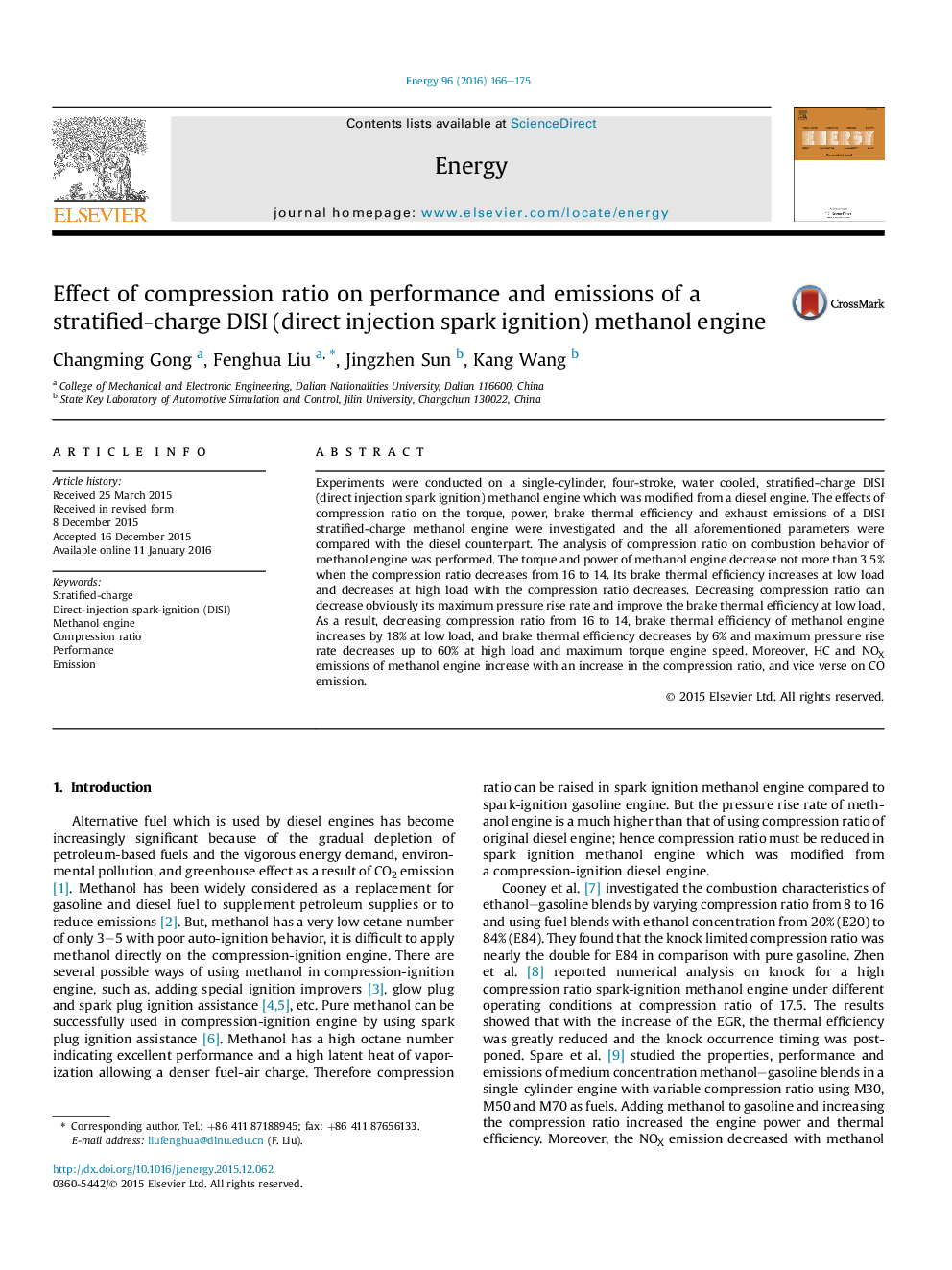| Article ID | Journal | Published Year | Pages | File Type |
|---|---|---|---|---|
| 1731257 | Energy | 2016 | 10 Pages |
•High compression ratio was used in direct-injection spark-ignition methanol engine.•Torque and power of methanol engine decrease slightly with compression ratio decreases.•The pressure rise rate was improved by decreasing compression ratio.•HC and NOX emissions of methanol engine increase with compression ratio increases.•CO emission of methanol engine decreases with compression ratio increases.
Experiments were conducted on a single-cylinder, four-stroke, water cooled, stratified-charge DISI (direct injection spark ignition) methanol engine which was modified from a diesel engine. The effects of compression ratio on the torque, power, brake thermal efficiency and exhaust emissions of a DISI stratified-charge methanol engine were investigated and the all aforementioned parameters were compared with the diesel counterpart. The analysis of compression ratio on combustion behavior of methanol engine was performed. The torque and power of methanol engine decrease not more than 3.5% when the compression ratio decreases from 16 to 14. Its brake thermal efficiency increases at low load and decreases at high load with the compression ratio decreases. Decreasing compression ratio can decrease obviously its maximum pressure rise rate and improve the brake thermal efficiency at low load. As a result, decreasing compression ratio from 16 to 14, brake thermal efficiency of methanol engine increases by 18% at low load, and brake thermal efficiency decreases by 6% and maximum pressure rise rate decreases up to 60% at high load and maximum torque engine speed. Moreover, HC and NOX emissions of methanol engine increase with an increase in the compression ratio, and vice verse on CO emission.
